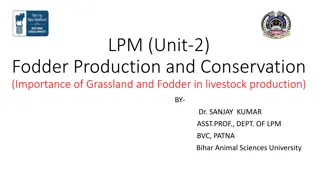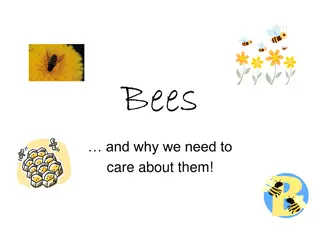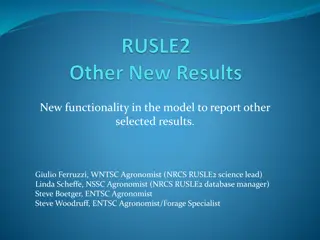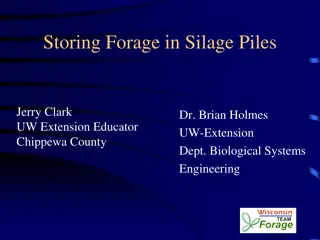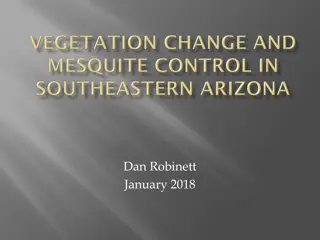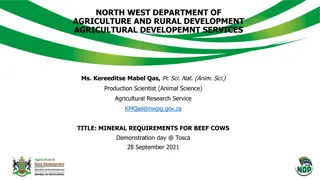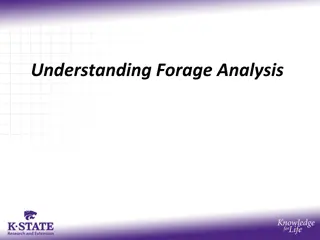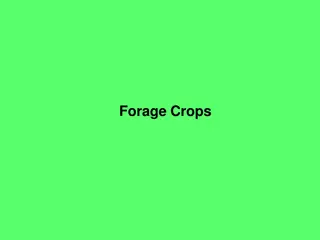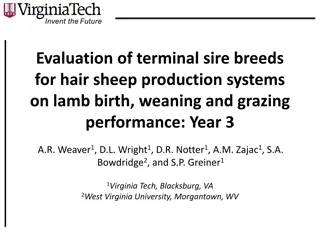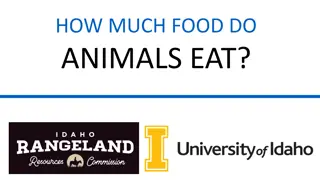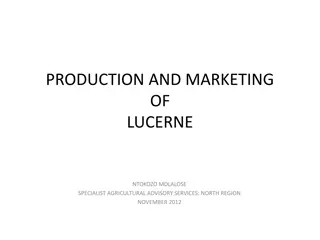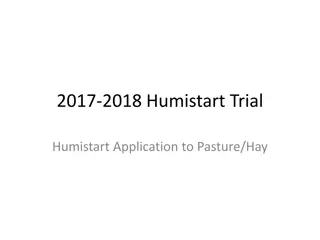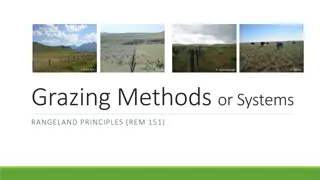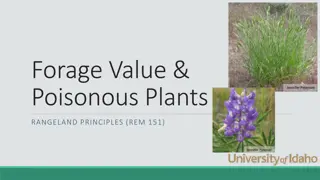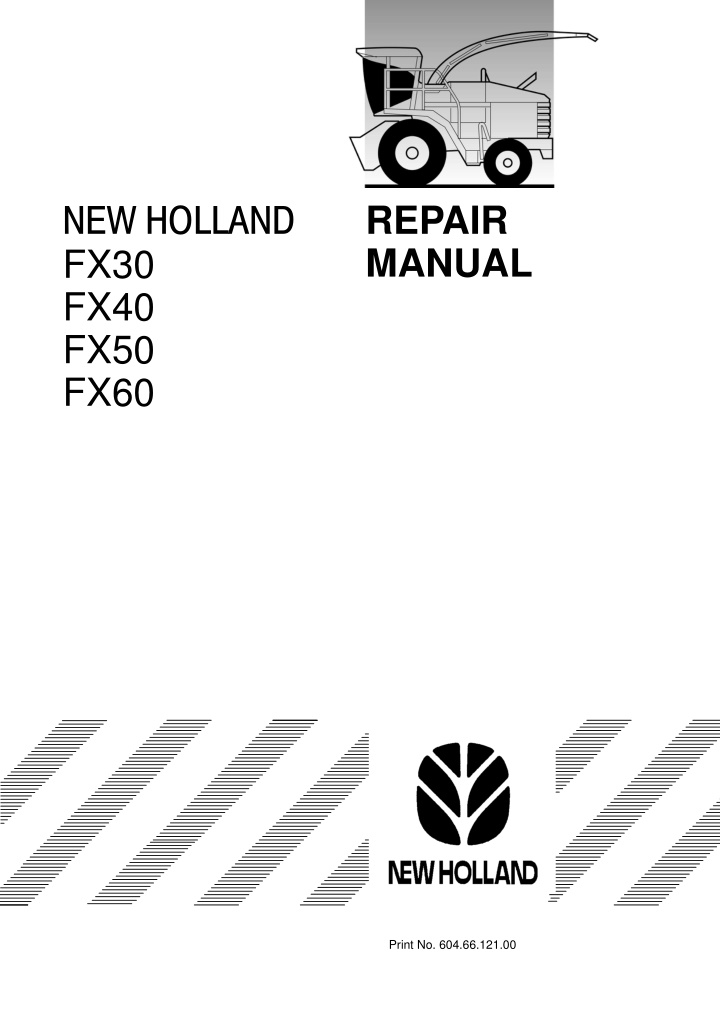
New Holland FX40 Forage Harvester Service Repair Manual Instant Download
New Holland FX40 Forage Harvester Service Repair Manual Instant Download
Download Presentation

Please find below an Image/Link to download the presentation.
The content on the website is provided AS IS for your information and personal use only. It may not be sold, licensed, or shared on other websites without obtaining consent from the author. If you encounter any issues during the download, it is possible that the publisher has removed the file from their server.
You are allowed to download the files provided on this website for personal or commercial use, subject to the condition that they are used lawfully. All files are the property of their respective owners.
The content on the website is provided AS IS for your information and personal use only. It may not be sold, licensed, or shared on other websites without obtaining consent from the author.
E N D
Presentation Transcript
REPAIR MANUAL ??????????? FX30 FX40 FX50 FX60 Print No. 604.66.121.00
FX30-FX40-FX50-FX60 FORAGE HARVESTERS REPAIR MANUAL SECTIONS CONTENT GENERAL INFORMATION ENGINE . . . . . . . . . . . . . . . . . . . . . . . . . . . . . . . . . . . . . . . . . . . . . . . . . . . . . . . . . LIVE P.T.O. . . . . . . . . . . . . . . . . . . . . . . . . . . . . . . . . . . . . . . . . . . . . . . . . . . . . . . . TRANSMISSION . . . . . . . . . . . . . . . . . . . . . . . . . . . . . . . . . . . . . . . . . . . . . . . . . . 4WD LINES . . . . . . . . . . . . . . . . . . . . . . . . . . . . . . . . . . . . . . . . . . . . . . . . . . . . . . FRONT MECHANICAL DRIVE . . . . . . . . . . . . . . . . . . . . . . . . . . . . . . . . . . . . . HYDROSTATIC TRANSMISSION . . . . . . . . . . . . . . . . . . . . . . . . . . . . . . . . . . . BRAKES AND CONTROL . . . . . . . . . . . . . . . . . . . . . . . . . . . . . . . . . . . . . . . . . HYDRAULIC SYSTEM . . . . . . . . . . . . . . . . . . . . . . . . . . . . . . . . . . . . . . . . . . . . STEERING . . . . . . . . . . . . . . . . . . . . . . . . . . . . . . . . . . . . . . . . . . . . . . . . . . . . . . . CAB CLIMATE CONTROL . . . . . . . . . . . . . . . . . . . . . . . . . . . . . . . . . . . . . . . . . ELECTRICAL SYSTEM . . . . . . . . . . . . . . . . . . . . . . . . . . . . . . . . . . . . . . . . . . . . ATTACHMENTS/HEADERS . . . . . . . . . . . . . . . . . . . . . . . . . . . . . . . . . . . . . . . . PRODUCT FEEDING . . . . . . . . . . . . . . . . . . . . . . . . . . . . . . . . . . . . . . . . . . . . . . CHOPPING . . . . . . . . . . . . . . . . . . . . . . . . . . . . . . . . . . . . . . . . . . . . . . . . . . . . . . EJECTION . . . . . . . . . . . . . . . . . . . . . . . . . . . . . . . . . . . . . . . . . . . . . . . . . . . . . . . ACCESSORIES . . . . . . . . . . . . . . . . . . . . . . . . . . . . . . . . . . . . . . . . . . . . . . . . . . . . . . . . . . . . . . . . . . . . . . . . . . . . . . . . . . . . . . . . . . . . 00 10 14 21 23 25 29 33 35 41 50 55 58 60 64 70 88 S E R V I C E
6 GENERAL INFORMATION SAFETY REGULATIONS WARNING AND DANGER SYMBOL This warning symbol points out important personal safety messages. Carefully read the following safety regulations and observe advised precautions in order to avoid potential hazards and safeguard your health and safety. In this manual the symbol is accompanied by the following key-words: WARNING Warnings concerning unsuitable repair operations that may jeopardise the safety of Repair personnel. DANGER Specific warnings concerning potential hazards for operator safety or for other persons directly or indirectly involved. Do not carry out repair operations with someone sitting in the driver s seat, unless the person is a trained technician who is assisting with the operation in question. ACCIDENT PREVENTION Most accidents or injuries that occur in workshops are the result of non observance of simple and funda- mental safety regulations. For this reason, IN MOST CASES THESE ACCIDENTS CAN BE AVOIDED by foreseeing possible causes and consequently acting with the necessary caution and care. Do not operate the machine or use any of the implements from different positions, other than the driver s seat. Do not carry out operations on the machine with the engine running, unless specifically indicated. Accidents may occur with all types of machine, re- gardless of how well the machine in question was de- signed and built. Stop the engine and check that the hydraulic circuits are pressure free before removing caps, covers, valves, etc. A careful and judicious service technician is the best guarantee against accidents. All repair and maintenance operations must be carried out using extreme care and attention. Service steps and platforms used in the workshop or elsewhere should be built according to standard accident prevention regulations. Precise observance of the most basic safety rule is normally sufficient to avoid many serious accident DANGER Disconnect the batteries and label all controls to indicate that the machine is being serviced. Any parts that are to be raises must be locked in position. Never carry out any cleaning, lubrication or maintenance operations when the engine is running. SAFETY RULES Do not check or fill fuel tanks, accumulator batteries, nor use starting liquid when smoking or near naked flames, as these fluids are inflammable. General guidelines Carefully follow specified repair and maintenance procedures. Brakes are inoperative when manually released for repair or maintenance purposes. Use blocks or similar devices to control the machine in these conditions. Do not wear rings, wristwatches, jewellery, unbuttoned or loose articles of clothing such as: ties, torn clothing, scarves, open jackets or shirts with open zips that may remain entangled in moving parts. It is advised to wear approved safety clothing, e.g.: non-slip footwear, gloves, safety goggles, helmets, etc. The fuel nozzle should always be in contact with the filling aperture. Maintain this position until filling operations are completed in order to avoid possible sparks caused by the accumulation of static electricity. 604.66.121.00 05 2003
https://www.ebooklibonline.com Hello dear friend! Thank you very much for reading. Enter the link into your browser. The full manual is available for immediate download. https://www.ebooklibonline.com
GENERAL INFORMATION 7 Only use specified towing points for towing the machine. Connect parts carefully. Make sure that all pins and/or locks are secured in position before applying traction. Never remain near the towing bars, cables or chains that are operating under load. All movements must be carried out carefully when working under, on or near the machine. Wear protective equipment: helmets, goggles and special footwear. When carrying out checks with the engine running, request the assistance of an operator in the driver s seat. The operator must maintain visual contact with the service technician at all times. Transport machines that cannot be driven using a trailer or a low loading platform trolley, if available. If operating outside the workshop, position the machine on a flat surface and lock in position. If working on a slope, lock the machine in position. Move to a flat area as soon as is safely possible. When loading or unloading the machine from the trailer (or other means of transport), select a flat area capable of sustaining the trailer or truck wheels. Firmly secure the machine to the truck or trailer and lock the wheels in the position used by the carrier. Damaged or bent chains or cables are unreliable. Do not use them for lifting or towing. Always use suitable protective gloves when handling chains or cables. Electric heaters, battery-chargers and similar equipment must only be powered by auxiliary power supplies with efficient ground insulation to avoid electrical shock hazards. Chains should always be safely secured. Make sure that the hitch up point is capable of sustaining the load in question. Keep the area near the hitch up point, chains or cables free of all bystanders. Always use suitable hoisting or lifting devices when raising or moving heavy parts. Take extra care if bystanders are present. Maintenance and repair operations must be carried out in a CLEAN and DRY area. Eliminate any water or oil spillage immediately. Never pour gasoline or diesel oil into open, wide or low containers. Do not create piles of oil or grease soaked rags as they represent a serious fire hazard. Always store rags in a closed metal container. Before engaging the machine, make sure that there are no persons within the machine or implement range of action. Never use gasoline, diesel oil or other inflammable liquids as cleaning agents. Use non-inflammable, non available solvents. toxic commercially Wear safety goggles with side guards when cleaning parts with compressed air. Empty your pockets of all objects that may fall accidentally unobserved into the machine inner compartments. Reduce the air pressure according to the local regulations in force.. In the presence of protruding metal parts, use protective goggles or goggles with side guards, helmets, special footwear and gloves. Do not run the engine in confined spaces without suitable ventilation. When welding, use protective safety devices: tinted safety goggles, helmets, special overalls, gloves and footwear. All persons present in the area where welding is taking place must wear tinted goggles. NEVER LOOK DIRECTLY AT THE WELDING ARC WITHOUT SUITABLE EYE PROTECTION. Do not smoke, use naked flames, or cause sparks in the area when fuel filling or handling highly inflammable liquids. Never use naked flames for lighting when working on the machine or checking for leaks. 604.66.121.00 05 2003
8 GENERAL INFORMATION Metal cables tend to fray with repeated use. Always use suitable protective devices (gloves, goggles, etc.) when handling cables. Electrical sustem If it is necessary to use auxiliary batteries, remember that both ends of the cables must be connected as follows: (+) with (+) and ( ) with ( ). Avoid short circuiting the terminals. GAS RELEASED FROM BATTERIES IS HIGHLY INFLAMMABLE. During charging, leave the battery compartment uncovered to improve ventilation. Never check the battery charge using jumpers (metal objects placed on the terminals). Avoid sparks or flames near the battery zone. Do not smoke to prevent explosion hazards. Handle all parts carefully. Do not put your hands or fingers between moving parts. Wear suitable safety clothing safety goggles, gloves and shoes. Start-up Never run the engine in confined spaces that are not equipped with adequate ventilation for exhaust gas extraction. Before servicing operations, check for fuel or current leaks.Eliminate any eventual leaks before proceeding with work. Never place the head, body, limbs, feet, hands or fingers near rotating and moving parts. Never charge batteries in confined spaces.Make sure that there is adequate ventilation in order to prevent accidental explosion hazards as a result of the accumulation of gases released during charging operations. Engine Always loosen the radiator cap slowly before removing it to allow any remaining pressure in the system to be discharged. Filling up with coolant should only be carried out with the engine stopped or idling (if hot).. Always performing any kind of servicing on the electrical system. disconnect the batteries before Hydraulic systems Never fill up with fuel when the engine is running, especially if hot, in order to prevent the outbreak of fire as a result of fuel spillage. A liquid leaking from a tiny hole may be almost invisible but, at the same time, be powerful enough to penetrate the skin. Therefore, NEVER USE HANDS TO CHECK FOR LEAKS but use a piece of cardboard or wood for this purpose. If any liquid penetrates skin tissue, call for medical aid immediately. Failure to treat this condition with correct medical procedure may result in serious infection or dermatosis. Never check or adjust fan belt tension when the engine is running. Never adjust the fuel injection pump when the Forage Harvester is moving. Never lubricate the Forage Harvester when the engine is running. In order to check the pressure in the system use suitable instruments. 604.66.121.00 05 2003
GENERAL INFORMATION 9 Wheels and Tyres Removal and Re-fitting Make sure that the tyres are correctly inflated at the pressure specified by the manufacturer. Periodically check the rims and tyres for damage. Lift and handle all heavy parts using suitable hoisting equipment. Make sure that parts are sustained by appropriate hooks and slings. Use the hoisting eyebolts for lifting operations. Extra care should be taken if persons are present near the load to be lifted. Stand away from (at the side of) the tyre when checking inflation pressure. Do not use parts of recovered wheels as incorrect welding brazing or heating may weaken and eventually cause damage to the wheel. Never cut or weld a rim mounted with an inflated tyre. Handle all parts carefully. Do not put your hands or fingers between parts. Wear suitable safety clothing safety goggles, gloves and shoes. To remove the wheels, lock all wheels. After having raised the machine, position supports underneath, according to regulations in force. Deflate the tyre before removing any objects that may be jammed in the tyre tread. Never inflate tyres using inflammable gases, as this may result in explosions and injury to bystanders. Avoid twisting chains or metal cables. Always wear safety gloves when handling cables or chains. 604.66.121.00 05 2003
SECTION 10 ENGINE CHAPTER 1 1 SECTION 10 ENGINE Chapter 1 IVECO Engine F3A General Model IVECO Engine FX 30 F3AE0684D*B001 CONTENTS Section Description Page Walk around the engine Left Side View Right Side View Front View Rear View Top View The iveco engine Engine block and cylinder liners Crankshaft . . . . . . . . . . . . . . . . . . . . . . . . . . . . . . . . . . . . . . . . . . . . . . . . . . . . . . . . . . . . . . . . . . . Crankshaft sealing rings . . . . . . . . . . . . . . . . . . . . . . . . . . . . . . . . . . . . . . . . . . . . . . . . . . . . . . . Connecting rods . . . . . . . . . . . . . . . . . . . . . . . . . . . . . . . . . . . . . . . . . . . . . . . . . . . . . . . . . . . . . . Pistons . . . . . . . . . . . . . . . . . . . . . . . . . . . . . . . . . . . . . . . . . . . . . . . . . . . . . . . . . . . . . . . . . . . . . . Camshaft . . . . . . . . . . . . . . . . . . . . . . . . . . . . . . . . . . . . . . . . . . . . . . . . . . . . . . . . . . . . . . . . . . . . Timing system . . . . . . . . . . . . . . . . . . . . . . . . . . . . . . . . . . . . . . . . . . . . . . . . . . . . . . . . . . . . . . . . Flywheel . . . . . . . . . . . . . . . . . . . . . . . . . . . . . . . . . . . . . . . . . . . . . . . . . . . . . . . . . . . . . . . . . . . . . Auxiliary drivebelt . . . . . . . . . . . . . . . . . . . . . . . . . . . . . . . . . . . . . . . . . . . . . . . . . . . . . . . . . . . . . Lubrication . . . . . . . . . . . . . . . . . . . . . . . . . . . . . . . . . . . . . . . . . . . . . . . . . . . . . . . . . . . . . . . . . . . Oil filter . . . . . . . . . . . . . . . . . . . . . . . . . . . . . . . . . . . . . . . . . . . . . . . . . . . . . . . . . . . . . . . . . . . . . . External Coil . . . . . . . . . . . . . . . . . . . . . . . . . . . . . . . . . . . . . . . . . . . . . . . . . . . . . . . . . . . . . . . Upstream Mount . . . . . . . . . . . . . . . . . . . . . . . . . . . . . . . . . . . . . . . . . . . . . . . . . . . . . . . . . . . Filter Septum . . . . . . . . . . . . . . . . . . . . . . . . . . . . . . . . . . . . . . . . . . . . . . . . . . . . . . . . . . . . . . Downstream Mount . . . . . . . . . . . . . . . . . . . . . . . . . . . . . . . . . . . . . . . . . . . . . . . . . . . . . . . . . Structural Parts . . . . . . . . . . . . . . . . . . . . . . . . . . . . . . . . . . . . . . . . . . . . . . . . . . . . . . . . . . . . Oil sump . . . . . . . . . . . . . . . . . . . . . . . . . . . . . . . . . . . . . . . . . . . . . . . . . . . . . . . . . . . . . . . . . . . . . Cooling . . . . . . . . . . . . . . . . . . . . . . . . . . . . . . . . . . . . . . . . . . . . . . . . . . . . . . . . . . . . . . . . . . . . . . Electronically controlled injection system . . . . . . . . . . . . . . . . . . . . . . . . . . . . . . . . . . . . . . . . . Electronic Control Unit . . . . . . . . . . . . . . . . . . . . . . . . . . . . . . . . . . . . . . . . . . . . . . . . . . . . . . Pump injector . . . . . . . . . . . . . . . . . . . . . . . . . . . . . . . . . . . . . . . . . . . . . . . . . . . . . . . . . . . . . . . . . Filling Stage . . . . . . . . . . . . . . . . . . . . . . . . . . . . . . . . . . . . . . . . . . . . . . . . . . . . . . . . . . . . . . . Injection Stage . . . . . . . . . . . . . . . . . . . . . . . . . . . . . . . . . . . . . . . . . . . . . . . . . . . . . . . . . . . . . Flow-back Stage . . . . . . . . . . . . . . . . . . . . . . . . . . . . . . . . . . . . . . . . . . . . . . . . . . . . . . . . . . . . . . . . . . . . . . . . . . . . . . . . . . . . . . . . . . . . . . . . . . . . . . . . . . . . . . . . . . . . . . . . . . . . . . . . . . . . . . . . . . . . . . . . . . . . . . . . . . . . . . . . . . . . . . . . . . . . . . . . . . . . . . . . . . . . . . . . . . . . . . . . . . . . . . . . . . . . . . . . . . . . . . . . . . . . . . . . . . . . . . . . . . . . . . . . . . . . . . . . . . . . . . . . . . . . . . . . . . . . . . . . . . . . . . . . . . . . . . . . . . . . . . . . . . . . . . . . . . . . . . . . . . . . . . . . . . . . . . . . . . . . . . . . . . . . . . . . . . . . . . . . . . . . . . . . . . . . . . . . . . . . . . . . . . . . . . . . . . . . . . . . . . . . . . . . . . . . . . . . . . . . . . . . . . . . . . . . . . . . . . . . . . . . . . . . . . . . . . . . . . . . . . . . . . . . . . . . . . . . . . . . . . . . . . . . . . . . . . . . . . . . . . . . . . . . . . . . . . . . . . . . . . . . . . . . . . . . . . . . . . . . . . 2 2 3 4 5 6 7 9 9 10 10 10 11 11 12 13 14 15 15 15 15 15 15 16 16 17 17 18 18 18 19 604.66.121.00 05 2003
SECTION 10 ENGINE CHAPTER 1 2 WALK AROUND THE ENGINE Left Side View 1 6 2 3 4 5 7 12 11 13 10 8 9 20015824 1 Ref. Description 1 2 3 4 5 6 7 8 9 10 11 12 13 Coolant Temperature Sensor (for instrument) Coolant Temperature Sensor (for EDC) Coolant Return Line from Turbocharger Oil Delivery Line to Turbocharger Turbocharger Exhaust Manifold Cam Cover Oil Filter Mount and Intercooler Oil Return Line from Turbocharger Coolant Delivery Line to Turbocharger Proportional Solenoid and VGT Position Sensor Compressed Air Cleaner for VGT Flywheel Sensor 604.66.121.00 05 2003
SECTION 10 ENGINE CHAPTER 1 3 Right Side View 1 2 3 5 4 10 6 9 7 8 20015825 2 Ref. Description 1 2 3 4 5 6 7 8 9 10 Cam Cover with Filter and Blow-by Valve Rocker Cover Filter Mount with Fuel Temperature Sensor Sound Absorbing Panel Intake Manifold with Heater Element and Air Sensor Fuel Feed Pump Starter Motor Air Compressor Electronic Control Unit A.C. Compressor 604.66.121.00 05 2003
SECTION 10 ENGINE CHAPTER 1 4 Front View 3 2 5 4 6 1 7 10 8 9 20015826 3 Ref. Description 1 2 3 4 5 6 7 8 9 10 Poly-V Belt Tensioner Alternator Fan Pulley Thermostat Case Fixed Drive Pulley for Poly-V Belt Coolant Pump Poly-V Belt Air Conditioner Compressor Drive Belt Tensioner for Belt I Viscostatic Damping Flywheel 604.66.121.00 05 2003
SECTION 10 ENGINE CHAPTER 1 5 Rear View 2 1 3 6 4 5 20015827 4 Ref. Description 1 2 3 4 5 6 Turbocharger Blow by Valve Blow by Filter Engine Flywheel Inspection Hole for Positioning Flywheel During Adjustments Window for Applying Flywheel Rotation Tool 604.66.121.00 05 2003
SECTION 10 ENGINE CHAPTER 1 6 Top View 1 3 2 5 6 7 4 20015828 5 Ref. Description 1 2 3 4 5 6 7 Flywheel Cover Casing Exhaust Manifold Turbocharger Fitting Power Steering Fluid Reservoir Rocker Cover Compressed Air Line 604.66.121.00 05 2003
SECTION 10 ENGINE CHAPTER 1 7 20015801 6 THE IVECO ENGINE The IVECO engine is a six cylinder tubocharged and aftercooled diesel engine. The engine uses electronically controlled mechanical injection pumps and has been designed to meet current emission regulations. The injection system on this engines is a high pressure type with the pump/injector operated by an overhead camshaft. The electronic control unit is physically identical for all versions, but contains software specific to each engine family and to each different power rating within individual families. During service, control unit software cannot be altered, except to enter certain configuration data when required. 604.66.121.00 05 2003
SECTION 10 ENGINE CHAPTER 1 8 20015802 7 Unlike conventional injection systems (with a single injection pump), the new injector pump injection system reduces particulate levels due to the high pressures generated. The sophisticated electronic management system also reduces other pollutants. The engine must only be serviced by an authorized service agent. The engine features cross flow cylinder heads, with inlet and exhaust manifolds on opposite sides of the cylinder head. The fuel and air combustion process, takes place in the specially designed bowl in the crown of the pistons. 604.66.121.00 05 2003
SECTION 10 ENGINE CHAPTER 1 9 ENGINE BLOCK AND CYLINDER LINERS The structure comprises and engine block, which is attached to a separate base. The seal between engine block and base is ensured by a layer of sealant. The wet cylinder liners are fitted into the engine block. They are interchangeable and can be removed. Water tightness is assured by rubber washers fitted in the lower part of the cylinder liners. Cylinder liner protrusion can be adjusted using shims, which are available as spares. The main journal seats are machined with both parts of the engine block fitted together. The inner finish of the cylinder liners and the liner and engine block structure are so well engineered that part deformation is not possible and engine oil consumption is therefore exceptionally low. Liner bores are sorted into two categories: Category A and Category B. A piston of corresponding category must be matched with each liner. 20015803 8 20015829 9 CRANKSHAFT The crankshaft is steel, with built-in counterweights. The main journals and crankpins are treated by induction hardening. The crankshaft is mounted on half bearings, the last of these is close to the flywheel and comprises built-in side shoulders. On this crankshaft, the throws are arranged so that the firing order is different to that of conventional IVECO 6 cylinder in line engines. The firing order of the IVECO engine is 1-4-2-6-3-5. half-bearings are sorted into three thickness categories, with a difference of .01 mm between one category and the next. When servicing, carefully select the category of half-bearing to be fitted to each main journal and crankpin in order to ensure radial clearance is maintained within specified limits. The crankpins and 20015804 10 604.66.121.00 05 2003
SECTION 10 ENGINE CHAPTER 1 10 CRANKSHAFT SEALING RINGS 1 The front and rear sealing rings are Rotostat sliding type. The rings take the form of a washer, 1, fitted directly onto the crankshaft, a sealing lip, 2, and a case, 4, fitted into a seat on the front cover or flywheel cover case. 4 2 3 This type of seal offers the advantage of creating a seal on the washer (at point, 3,) instead of directly on the shaft. This sort of seal is more effective, because it is not affected by side-to-side shaft movements and the shaft itself does not become grooved. Special tools must be used to remove and refit these seals. CONNECTING RODS 20015805 11 The connecting rods are oblique-cut type, in pressed steel, with broaching on mating surfaces between rod and cap. Data on weight category, half-bearing seat bore category and rod/cap mating numbers are stamped on the connecting rod. 20015806 12 PISTONS The pistons are fitted with three piston rings. The first sealing ring is trapezoid in cross-section, the second sealing ring is chamfered, and the third is a scraper ring. 1 Pistons are sorted into two categories, 1 and 2, according to diameter. They are elliptical in shape and made out of aluminum alloy. The piston crown includes a high-turbulence combustion chamber. 2 20015807 13 604.66.121.00 05 2003
Suggest: If the above button click is invalid. Please download this document first, and then click the above link to download the complete manual. Thank you so much for reading
SECTION 10 ENGINE CHAPTER 1 11 CAMSHAFT The camshaft turns on seven mounts (without removable caps), which are built into the cylinder head and fitted with bushes. There are three drive cams per cylinder. 20015808 14 TIMING SYSTEM 1 The camshaft is driven by a series of helical gears in a cascade unit located to the rear of the engine. Upper intermediate gear, 2, is fitted on an adjustable mount. This maintains the correct clearance between this gear and gear, 1, whose position is affected by head gasket thickness tolerances. The center of rotation of all other gears is fixed and determined by machining. Timing gears are not marked with notches or codes as on conventional models because gear timing adjustment is no longer necessary on the new engines. 2 20015809 15 604.66.121.00 05 2003
https://www.ebooklibonline.com Hello dear friend! Thank you very much for reading. Enter the link into your browser. The full manual is available for immediate download. https://www.ebooklibonline.com


